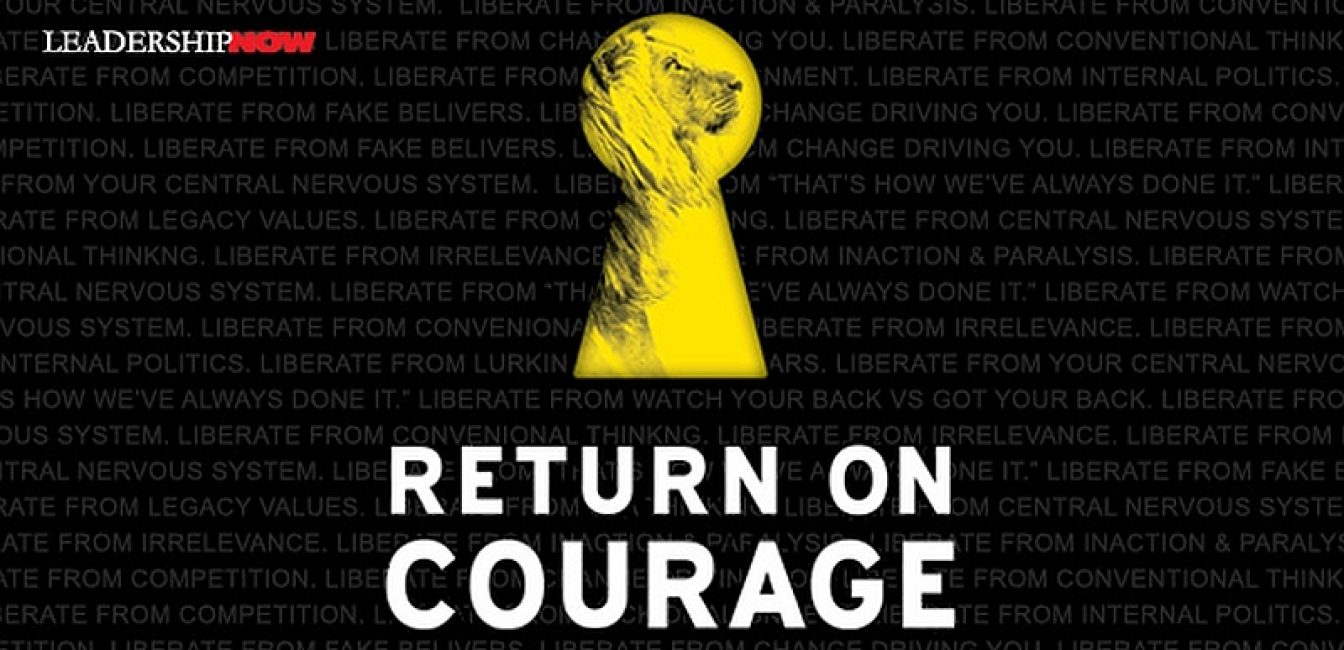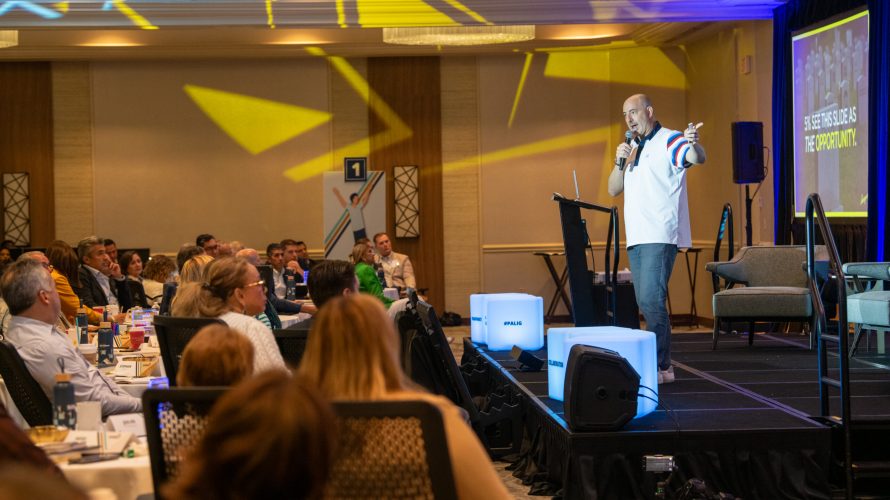COURAGE is what gets you from here to there. But it’s not courage or risk. It’s courage and risk. They work together. “Those who are risk-averse are inadvertently courage-adverse,” says Ryan Berman author of Return on Courage.
It is a balancing act. “If courage is the accelerator, then risk is the brake pedal. You need them both to drive a car, but you can’t press them at the same time or the car won’t work.” So how hard should you hit the gas? How important is it that you change?
Why courage? Why now?
Because companies are perishing at an alarming rate. Fifty-two percent of Fortune 500 companies from the year 2000 are now extinct. This is due primarily because the market has changed and we are afraid to do what we need to do to change with it. Qualcomm’s Roger Martin told Berman, “Everybody who’s involved in trying to resurrect what existed before, those people die…. You have to stop doing the thing that right now is making you a ton of money. You have to start shifting, and that pts the current income a risk.” And that takes courage — a lot of it.
What is Courage?
Berman defines courage as acquiring knowledge, building faith, and taking action. All three elements have to be present for there to be courage. Knowledge and faith without action is paralysis. Having faith and taking action without proper knowledge is reckless. Acquiring knowledge and then taking action is just not enough; it’s playing it safe.
Courage is a daily decision that anyone can develop more of. It’s not a reckless action done without thinking because courage should always begin with knowledge.
Central Courage System
What we need is a Central Courage System. “The Central Courage System is a process that your team can repeatedly turn to for guidance. Once it has been established and implemented, you can lead with your system’s values, purpose, and point of view. The Central Courage System teaches us how to make bold, swift decisions.”
The Central Courage System is represented by the acronym P.R.I.C.E.: Prioritize through Values, Rally Believers, Identify Fears, Commit to a Purpose, Execute your Action.
Prioritize Through Values
Determine and then prioritize the values that matter most to you and your organization. And then by living these values, they become your organization’s “best friend, something your team can rely on during every decision and offering regarding your business.” Courageous decisions are easier when you have prioritized your values.
Rally Believers
The job of leaders is to create believers. “To do this, you must surround yourself with others who rightfully buy in to the values, purpose, offerings, and people of the organization.” Respecting your team, positive reinforcement, repeating and living your message helps to build believers.
Identify Fears
“Fear chokes us up and holds us back. Fear shackles us to the status quo where we feel secure and convinces us to avoid controversial action and hard conversations. Fear fuels paralysis and empowers unwanted procrastination.” So we have to address our fears head on—our industry fears, product fears, service fears, perception fears, and our personal fears. Author Brian Krans wrote, “Fear is the thief of dreams.”
Commit to a Purpose
Your purpose is your reason for existing. “To pick a purpose is to make a choice. What is your brand willing to commit to or sacrifice to make sure your purpose succeeds?” A worthy purpose must be truthful, purposeful (Not a call to action, but a call for action), emotional, and differential.
Execute Your Action
Without taking action, you, of course, go nowhere. When executing, you are either executing on a new offering or a new message. Either way, your mission “is to give people just enough information on your product or idea that they will persuade themselves.”


